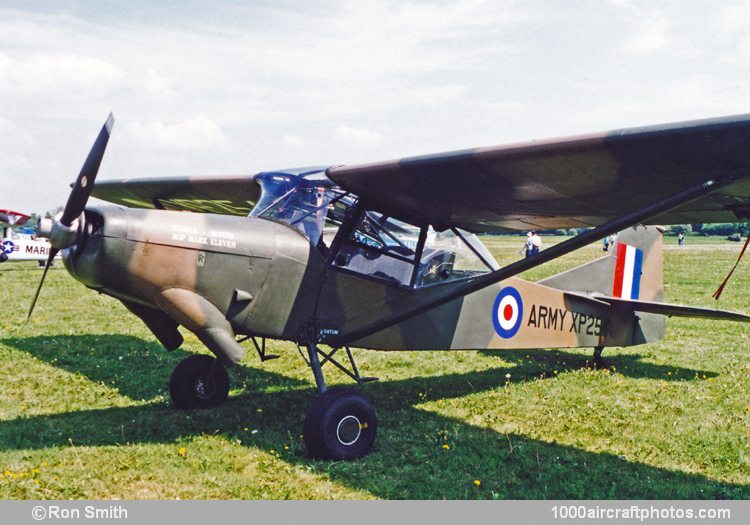Under the company designation A.115 (which later changed to E3), design work on the A.O.P. Mk.11 began in April 1961 and it was almost identical to the A.O.P. Mk.9. Main difference was the 260 hp Continental engine replacing the 173 hp Cirrus, furthermore a large dorsal fin was added and initially it had landing gear strut covers and wheel spats. Still allotted the military serial XP254, but with the new c/n B.701, the aircraft was first flown on August 18, 1961. The aircraft participated in the SBAC Display at Farnborough in September 1961.
XP254 was never delivered to the AAC and in 1962 Beagle Aircraft (by then 'Auster' had been dropped from the company name) reserved the 'Class B' marking G-25-12. However, this was not taken up, instead the aircraft was registered G-ASCC on July 23, 1962 and on August 29 a CofA was issued. Despite extensive demonstration flying the type was not sold and eight years later, July 31, 1970 the registration was cancelled. It came back on the register on January 18, 1971 and since it had nine successive owners and is still registered as of this day."
Type: Three-seat Air Observation Post.
Wings: Strut-braced high-wing monoplane. Wing section NACA 23012. Aspect ratio 6.7. Constant chord of 5 ft 6 in (1.68 m). Dihedral 2°. Incidence 5° 11' at root, 3° 41' at tip. All-metal single-spar structure, with leading edge torsion box, fabric covered. Slotted ailerons and split flaps have metal structure, with fabric covering. Ground-adjustable tabs in ailerons.
Fuselage: Welded steel-tube structure, fabric covered.
Tail unit: Cantilever all-metal stressed-skin construction. Fixed incidence tail plane. Trim-tab in port elevator.
Landing gear: Dowty liquid-spring shock-absorbers. Goodyear main wheels and tires, size 8.50 x 6, pressure 26 lb/sq.in (1.83 kg/sq.cm). Goodyear hydraulic disc brakes. Non-retractable fully castoring tail wheel type. Retractable ski installation available.
Power plant: A 260 hp Rolls-Royce built Continental IO-470-D six-cylinder horizontally-opposed air-cooled engine, driving a McCauley two-blade constant-speed propeller, diameter 7 ft 2 in (2.18 m). Two fuel tanks in wing roots, with total capacity of 36 gal (136 l). Refueling points in wing upper surface. Oil capacity 2.4 gal (9.0 l).
Accommodation: Pilot and one passenger side-by-side. Second passenger in rear of cabin, facing either fore or aft. Door at front on each side, and at rear on starboard side.
Electronics and equipment: Blind-flying instrumentation standard. Radio to specific operational requirements. Optional equipment includes robot camera, cable-laying gear and flare or light bomb carrier.
